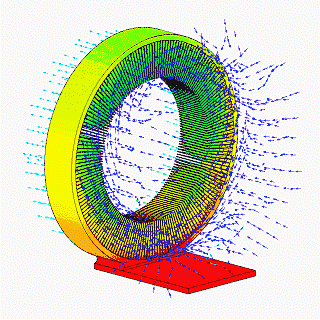Heat spreader

A heat spreader conducts heat between a heat source and a heat sink or heat exchanger. Most commonly a plate or block of material having high thermal conductivity, such as copper, aluminum, or diamond. (A heat pipe performs a similar function, but it uses moving fluids inside a sealed case.) By definition, it "spreads out" heat, so that the heat exchanger(s) may be more fully utilized. This has the potential to increase the heat capacity of the total assembly, but the additional thermal junctions limit total thermal capacity. The high conduction properties of the spreader will make it more effective to function as an air heat exchanger, as opposed to the original (presumably smaller) source. The low heat conduction of air in convection is matched by the higher surface area of the spreader, and heat is transferred more effectively.
A heat spreader is generally used when the heat source tends to have a high heat-flux density, (high heat flow per unit area), and for whatever reason, heat can not be conducted away effectively by the heat exchanger. For instance, this may be because it is air-cooled, giving it a lower heat transfer coefficient than if it were liquid-cooled. A high enough heat exchanger transfer coefficient is sufficient to avoid the need for a heat spreader.
The use of a heat spreader is an important part of an economically optimal design for transferring heat from high to low heat flux media. Examples include:
- A copper-clad bottom on a steel or stainless steel stove-top cooking container
- Air-cooling integrated circuits such as a microprocessor
- Air-cooling a photovoltaic cell in a concentrated photovoltaics system
Diamond has a very high thermal conductivity. Synthetic diamond is used as submounts for high-power integrated circuits and laser diodes.
Composite materials can be used, such as the metal matrix composites (MMCs) copper–tungsten, AlSiC (silicon carbide in aluminium matrix), Dymalloy (diamond in copper-silver alloy matrix), and E-Material (beryllium oxide in beryllium matrix). Such materials are often used as substrates for chips, as their thermal expansion coefficient can be matched to ceramics and semiconductors.

%2C_heat_spreader_removed.jpg)
See also
References
- ↑ Koen Crijns (2014-01-31). "Workshop Haswell delidding: improve CPU cooling!". hardware.info. Retrieved 2016-07-29.